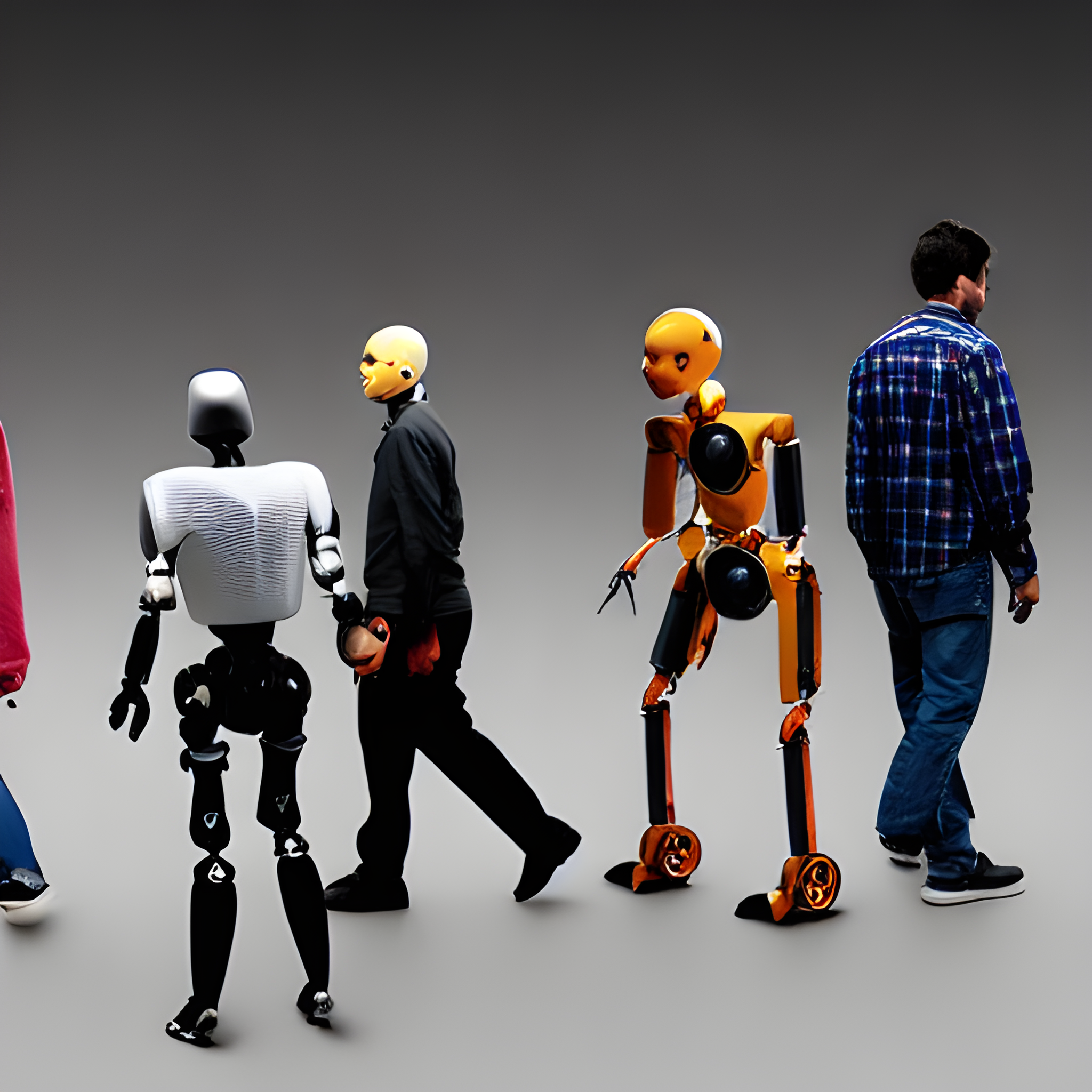Why is Optimus humanoid?
Few days ago TESLA introduced their humanoid robot, Optimus. One question of the many raised by this announcement is why a humanoid bot? The answer could be: in order to be able to learn by observing.

Stable diffusion, prompt: several humans and robots walking around, Realistic, Photo, Detailed and Intricate. Seed: 0, Sampler: plms, Inference Steps: 50, Guidance Scale: 10.9, Fix Faces: GFPGANv1.3, Upscale: RealESRGAN_x4plus
The history of technology in general, and more recently robotics and machine learning has shown that the best technical solutions do not imitate biology. Systems designed for specific tasks are much easier to optimize and can reach performance levels superior to comparable biological solutions. Thus, a humanoid robot would be suboptimal on any individual task.
Initially I thought that versatility would provide the biggest advantage for such a form. But it is far from obvious why a spider-like robot would be less versatile. Another possibility is that a humanoid robot can be better used in spaces and with tools already designed for humans. This would mean that a humanoid form is just the first step in the evolution of the independent robot, and other forms will evolve together with their environment.
My thinking is that a humanoid form will also provide a big advantage for the training of the robot. Training AI’s for object detection, for example, is normally done starting from datasets of recorded images. Surprisingly “mobile” embodied AI agents seem to be superior to their static counterparts. In general one could very well understand that “learning by doing” would be a better strategy, but still, not an argument for a humanoid form.
Yann LeCun, AI chief at Meta, has published a paper few months ago laying out his vision for “autonomous” AIs that can learn and experience the world as animals and humans. The paper is very dense, and I could not follow it in detail, but one point that struck me is the fact that animals seem to learn much more from observation than for doing.
The tribulations of artificial systems, typically trained using reinforcement learning, do not look like learning in animals.
LeCun points out that animals have a common sense, a world model they can draw on to predict the future and largely avoid fatal courses of action when learning a new skill. This common sense can be itself taught by observation and allows them to learn skills after relatively few trials. And here comes back the importance for our robots to be humanoid. The best way for them to learn is by imitating other agents with similar builds. And the only examples we can provide in quantity and diverse enough are tasks performed by humans. Therefore, the robots have to look like us in order to learn from us.
I am not sure this is the reason why TESLA has chosen to make a humanoid bot. There are proven training strategies that make use of pre-recorded and reference trajectories, and they seem to use some of those. And, in the future, I am sure that we will see more robots able to learn by observing and mimicking other agents with similar builds.